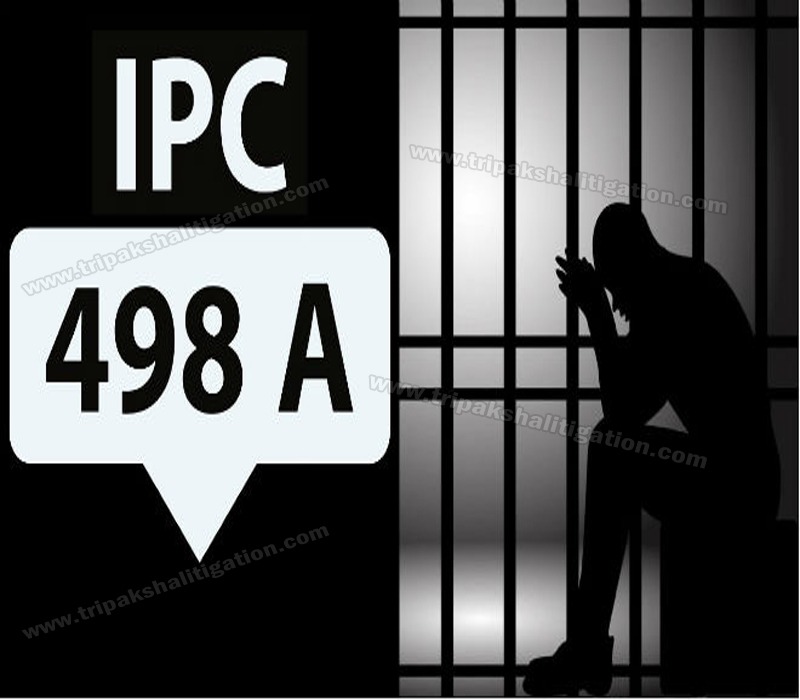Many litigants who face criminal litigation for the first time are unaware of the difference between Indian Penal Code (IPC) and Criminal Procedure of Code (CrPC), thus this confusion over which code is used. When one talks about the difference between the Code of criminal procedure, 1973 and the code of Indian penal system i.e. IPC, 1860, the answer gets difficult while explaining to person of other profession than one belonging to the field of law. Therefore for understanding the fundamental concept of difference between Code of criminal procedure, 1973 and the Indian penal code an illustration could be best used.
For instance a person is required to ascend to the 4th floor of a building for any reason and for doing so he is to mount through stairs. Now this example could be construed in the legal mirror to understand the fundamental difference between Cr.PC & IPC. Here the “reason” can be his prerogative, for which he is suing a person, and the 4th floor is the Indian Penal Code but in order to reach the 4th floor (IPC) the stairs are the Procedure of the Criminal code (CR.PC).
There speaking tersely if an actionable incident takes place the person can have his redressal which is enumerated in the India Penal Code but as to how the redressal will be achieved and the procedure which is to be followed is elucidated in the code of Criminal Procedure.
Whereas, this illustration cannot be considered as the sole difference between the two code i.e. The Code of Criminal procedure, 1973 & The Indian Penal Code of 1860, but to understand more brief idea of the two codes in isolation is equally important.
The Indian Penal Code
The Indian Penal Code, 1860 is the official criminal code of India, which was drafted in 1860 with an objective, to provide a general penal code for the country having 511 sections across 23 chapters, providing the list of crimes along with their definitions and punishments, being amended several times now the jurisdiction extends to the whole of India except the State of Jammu and Kashmir.
The Code is the primary criminal Code of the country and was drafted during the British Raj in the year 1850 and was presented to the then Legislative Council in the year 1856 while it came into force on 1st January 1862. It covers various offences (divided into multiple categories) and the related punishments for the said crimes such as, Crimes against the body, Crimes against property, Economic crimes and various other crimes along with the punishment entailed in each section.
The Code of Criminal Procedure
The Code of Criminal Procedure, 1973 is the main legislation on the procedure for the regulation of criminal law in India it details the procedure for the investigation of the crime, presenting criminals before the court of law, collection of evidence, determination of guilt or innocence of the accused, imposition of penalties or punishments etc further laying down the hierarchy of the courts competent to try criminal lawsuits. In descending order it is the High Court at the top followed by Sessions Court, First Class Judicial Magistrate, Second Class Judicial Magistrate and Executive Magistrate. There is a limit affixed for sentences which these courts can pass against the accused as per the stipulated hierarchy. The code was enacted in, 1973 and at present it contains 484 sections bifurcated into 37 chapters it also has two schedules and 56 forms. The Code was enacted by the Parliament on 25th January 1974, to consolidate and amend the law relating to Criminal Procedure. It details the procedure for:-
- Investigation of crime.
- Treatment of the suspects.
- Evidence collection process.
- Determining whether the accused is guilty or innocent.
In addition to the above, the code also deals with the prevention of crime, family maintenance, public nuisance etc. The Code of Criminal Procedure, 1973 has undergone over 17 amendments. The Supreme Court, High Court, various level magistrates and police are the law enforcing bodies which function under the Code of Criminal Procedure, 1973.
Major Difference between the two Codes
The Criminal Procedure Code is read along with the Indian Penal Code, 1862 and the Indian Evidence Act, 1872. There often exists a state of perplexity concerning the difference between the Indian Penal Code, 1862 and the Criminal Procedure Code, 1973. Through there are differences between the two legislation. The Indian Penal Code provides a substantive list of all crimes and lays down the punishment for each one of them. For instance, Section 378 defines “Theft” and the punishment for the offence of theft is spelt out under Section 379.On the other hand, Code of Criminal Procedure, 1973 is a procedural law, and it lays down the ways or methods to be followed in a criminal case. So if a person is charged with ‘theft’, it is the code of criminal procedure which provides further details as to how the investigation would be carried out, and how the evidences will be collected. The primary purpose of Indian Penal Code is to provide a general penal code for India which prescribes punishments to wrong-doers and goal of Code of criminal Procedure is to consolidate the criminal law in the country.
The Indian Penal Code is a substantive law whereas; the Code of Criminal Procedure is procedural law. From the above definition and information related to both the codes the vital differences between the two can be held as:-
- While IPC is the fundamental criminal law which is enforced in the country, the code of criminal procedure denotes the procedure that needs to be followed in terms of a criminal case.
- IPC is a substantive law by nature; whereas Cr.PC can be termed as being procedural in nature.
- Indian Penal Code is regarded as the general penal code and the Cr.PC consolidates the general penal code.
- Code of Criminal Procedure, 1973 has the guidelines for the court developments and power of the judges whereas the Indian Penal Code devoid such guidelines.
- IPC is a comprehensive code that lists down crimes and punishments for them while Cr.PC lists down the procedure to enact them.
The Indian Penal Code states various crimes and classifies them into multiple categories. The Code also prescribes the penalties and the punishment for the respective crimes. The Criminal Procedure Code on the other hand prescribes the procedure which the police take to investigate any offence after having committed any crime mentioned under the penal laws.
The purpose of the Indian Penal Code is to provide a primary penal code in the country for giving punishment to the wrongdoers. On the other hand, the main motive of the Criminal Procedure Code is to provide for binding procedures which must be enacted during the administration of a criminal trial.
CONCLUSION
By now you would have been able to identify that it is 498A IPC and not 498A CrPC. The Indian Penal Code, Code of Criminal Procedure and the Indian Evidence Act are the three primary legislation governing criminal law in India. They continue to play an important role in the court of law for the effective administration of justice. Besides, there is other legislation such as the Prohibition of Child Trafficking Act, the Juvenile Justice Act, which supplements the three main legislation. Both the IPC and the Cr.PC are pan-India in nature and extend to the whole of the State although Jammu and Kashmir are beyond their jurisdiction.
Due to the rise in crimes and criminals, it becomes important for all the citizens to learn the basic differences between the primary criminal laws in the country. Substantive laws refer to those laws which define the rights and duties of individuals and the respective punishment and organizations whereas the Procedural Laws include those rules which govern the process of determining the duties and rights of individuals and organizations.
You may contact me for consultation or advice by visiting Contact Us and Call us








